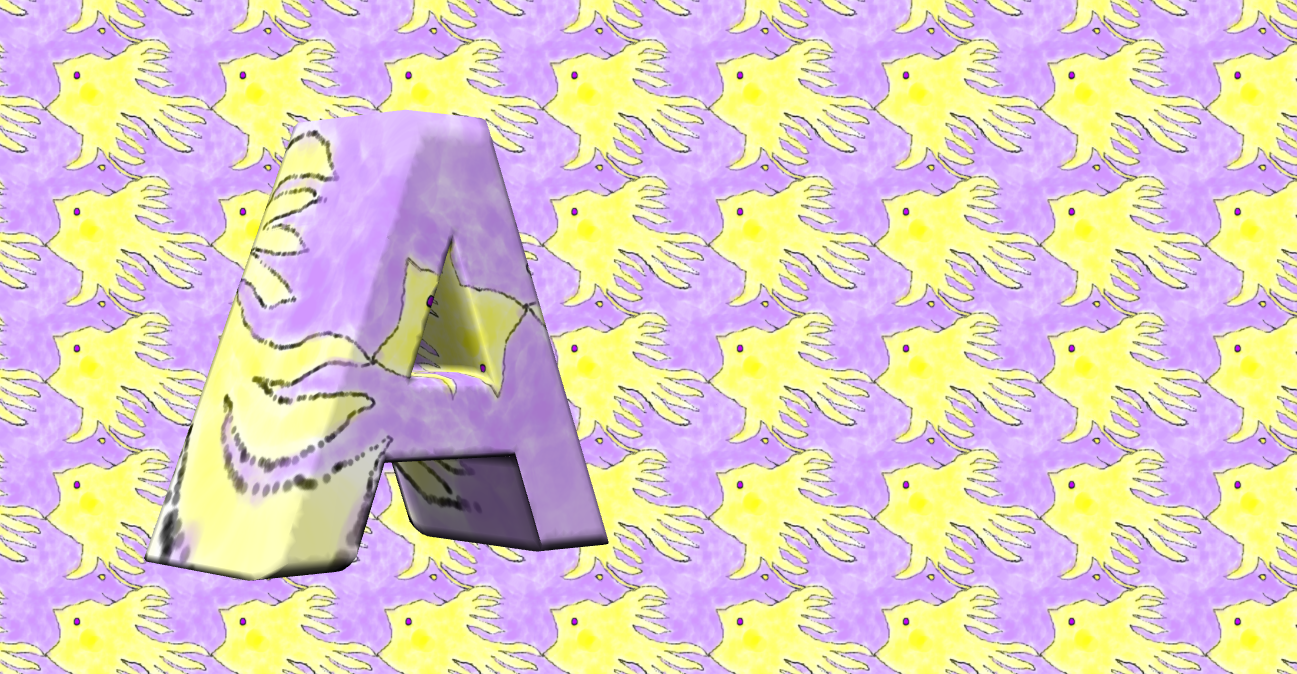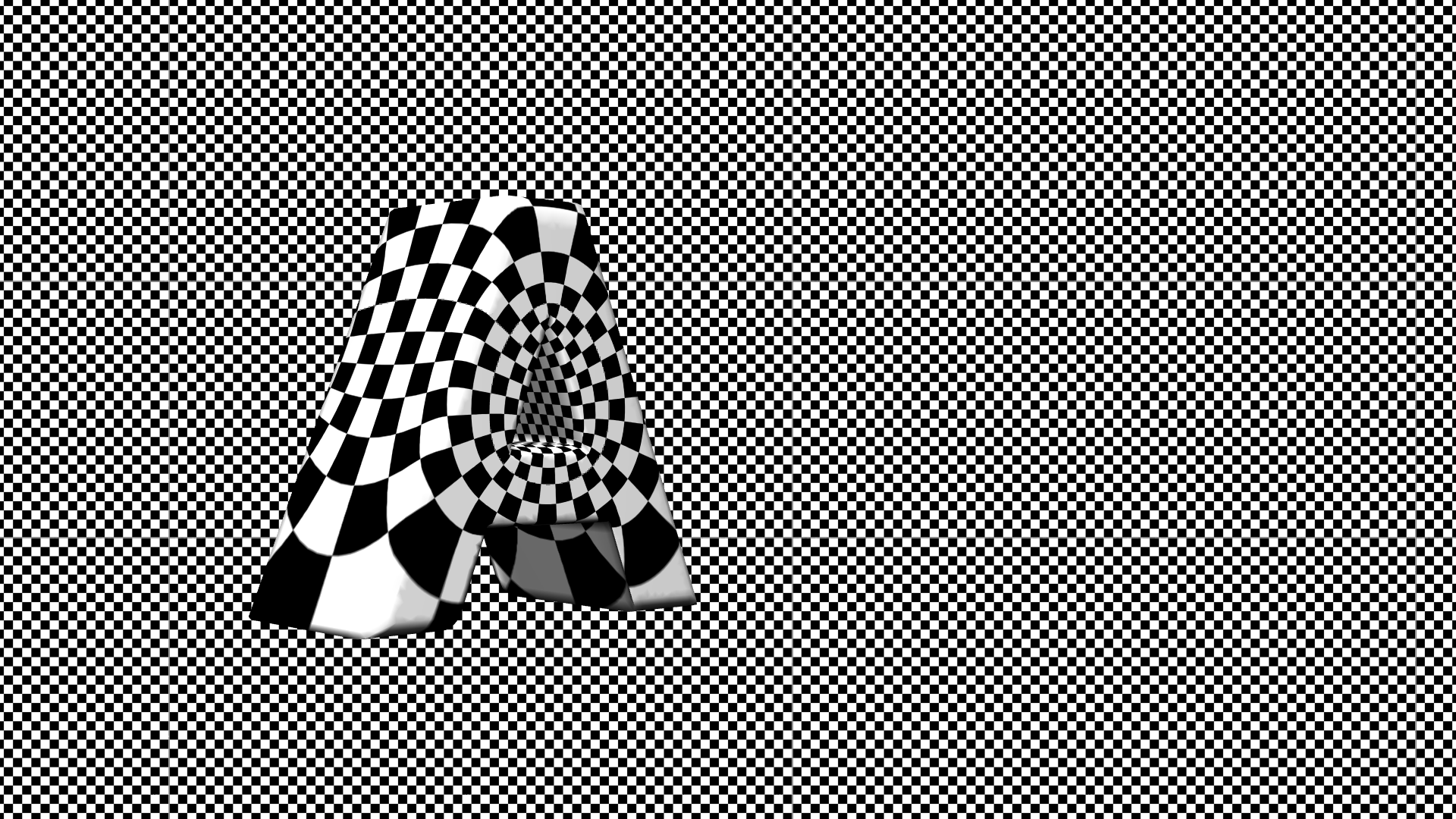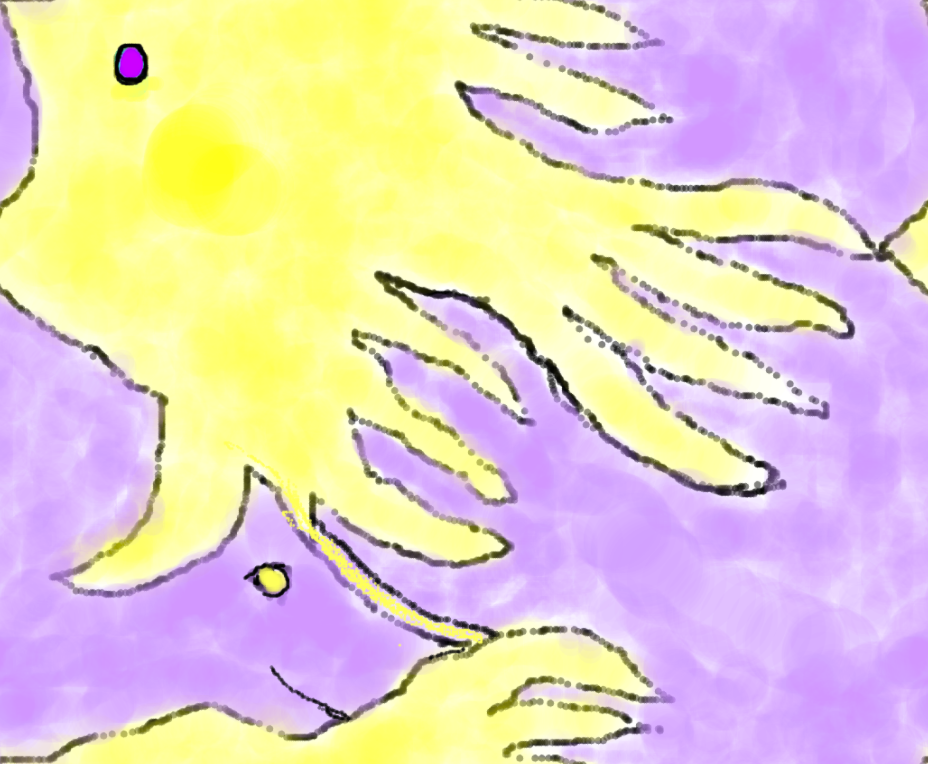The course is over, the presentations are over (well except for one) and the grades have been assigned … but there’s still one more thing for the Mathematical Visualization WS 2013 participants before I close up this blog.
The Problem has to do with conform!, the movie on conformal maps which I’m in the process of finishing up. There’s a section involving an inflated letter “A” where I need your help to produce a better texture image. This “A” is a topological torus and as such can be unrolled conformally onto the euclidean plane. Like most of the texture maps in the movie, to begin with this one is based on a checkerboard. And that works for the first half of the section. But once we’ve found the conformal structure (which is a rectangle with aspect ratio almost exactly 17:14), it’s time for a new texture image, since the end of the section tessellates the rectangle to cover the whole euclidean plane. That’s too many little black and white squares when the checkerboard image is used, as I think the following image makes clear:
In an effort to create a better texture I naturally thought of the MVWS13 student project Escher Painter from Sophia Lee and Martin Swiontek Brzezinski which is designed to deal with just this situation. I first convinced Martin to add a feature to allow the fundamental domain to be rectangular not just square (Thanks, Martin!) and I then gave the dimensions 17 x 14, as mentioned above. I worked some more and produced the following image, based on an Escher print of interlocked fish/bird (group O) included in the Handbook of Regular Patterns , p. 176, by Peter Stevens — a resource I used a lot during the course. I admit it’s not very professional but I think the end result is still more pleasing than the checkerboard hell above.
which tessellates as follows. Well, actually I used 2×2 copies to cover the “A”, since otherwise it’s too hard to identify what one sees on the surface of the “A”.
The Contest. The idea now is to get you involved to produce something better for this purpose. Here’s how to proceed:
- Use Escher Painter, referenced above. Martin, the developer, has declared himself prepared to answer your questions if you do want to participate in the contest.
- Enter the aspect ratio of 17 x 14 in the number fields provided.
- Begin with the default group O. But you can also choose groups which are compatible with O — which in this case means there are no rotation centers of order 3 or higher, and preferably no mirrors. When you save the image (see below) you’ll need to save a translational unit, which may involve more than one fundamental domain.
- Choose paint mode. Experiment with the painting tool, combining the size and the transparency for lots of different effects. Notice also the cool “undo” and “redo” buttons. I recommend using a strong dark outline for your forms. My first attempt above doesn’t have strong enough outlines, I think.
- Also note that if you have to stop and restart, you can save the state of your painting using the “Save project” button at the top of the panel and restore it with the “Load project” button.
- When you are satisfied with the result, save the image.
- Use the camera zoom tool so that one translational unit fills as much of the graphics window as possible.
- I found the best way to be not to use the “File->export->image” option in jReality, but on my Mac I used the Grab application, chose to grab the selection, and then very carefully drag a rectangle from the upper left corner of one translation cell to the lower right corner (the pixels at these corners should be identical parts of the pattern.) if you don’t have access to such a tool, use “File->Export->Image…” and … sigh … I’ll have to extract the translational unit myself.
- Email me the result.
- Optionally, save the “project” file using the “Save project” button and email me the result. I’ll handle saving the image.
- I’m not aware of any copyright issues involved in producing images in this way which resemble original Escher images. Does anyone know better?
- The contest deadline is Monday July 14 at 12 pm. The winning image (subject to approval by the movie team) will be used in the movie for the end of this section, and the winner will be credited in the movie credits.
See this post for an update on this contest.


